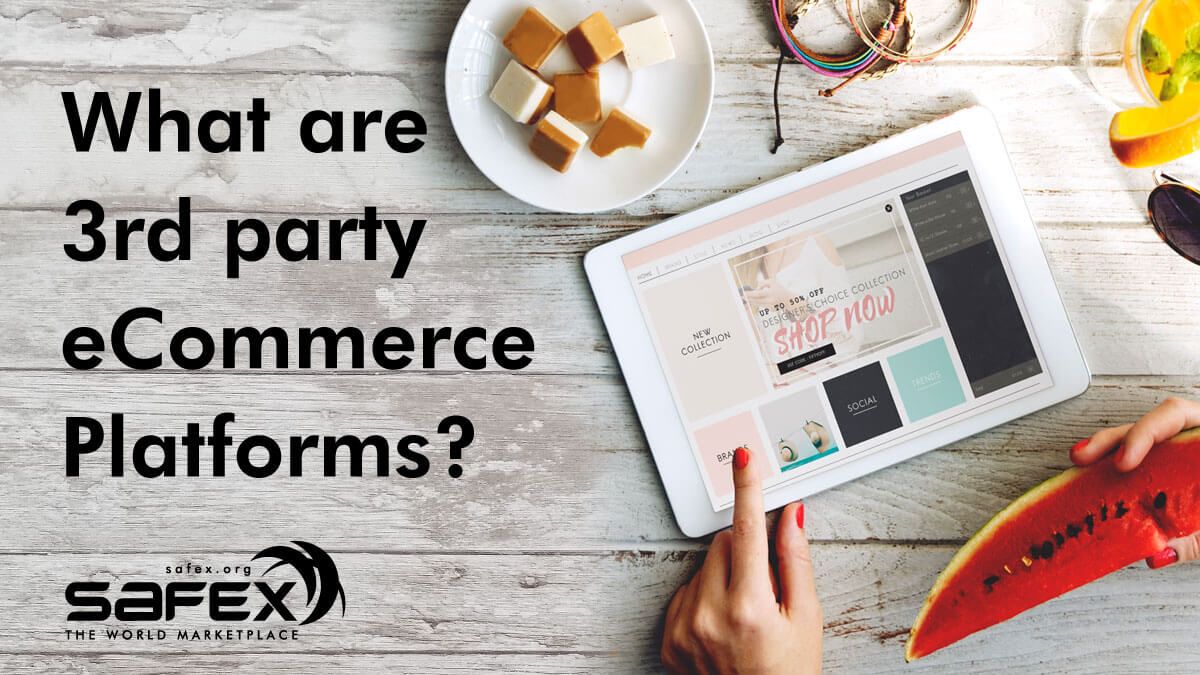What are 3rd party eCommerce Platforms?
Also known as eCommerce marketplaces, third-party eCommerce platforms host and manage online sales for different brands. Learn how to use them correctly.

The tremendous rise of eCommerce over the last decade has transformed the global landscape of retail sales immensely. Some entrepreneurs choose to build their own website, while others decide to join a preexisting 3rd party eCommerce platform. Although both choices have their advantages and disadvantages, we decided to focus on the 3rd party eCommerce platforms today. Some of the biggest names in this industry continue to grow year after year, yet it seems that not enough merchants make a significant revenue using them. Therefore, we decided to break down the subject and go through the advantages these platforms can offer, and explain some of the best practices that will help you grow your revenue.
What are 3rd party eCommerce platforms?
Also known as eCommerce marketplaces, third-party eCommerce platforms take an essential place in eCommerce terminology. They allow merchants to place their services and products for sale on a preexisting platform. So, instead of doing the hard work building your website, you can showcase and sell your products on a third-party platform. Some of the well-known examples include Amazon, eBay, Etsy, and of course: Safex Market etc.
E-commerce marketplaces host and manage online sales for different merchants and brands in exchange for a fee. They can be an excellent choice for businesses of any size when used correctly. If you’re looking to start selling online, you may have considered doing it via a third-party platform. Some entrepreneurs fear selling on eCommerce marketplaces won’t allow them to build brand identity or gain loyal customers. However, once you understand the advantages of 3rd party platforms and learn how to use them, you’re bound to boost your sales and increase eCommerce revenue.
Advantages of using third-party eCommerce platforms
When you’re starting a business, there are so many things you need to get done. It may all seem overwhelming, from building a website, selecting and shipping products, and improving sales to managing payment options. Fortunately, eCommerce marketplaces can simplify all of it; they do a lot of work for you. Most eCommerce marketplaces are already equipped with professional marketers, developers, and designers, with years of experience and let you purchase their services for a significantly lower price. We listed the main advantages of using 3rd party eCommerce platforms:
- Exposure of your products to a broader customer base. Many popular marketplaces have millions (if not billions) of users. When you join one of these platforms, you’re able to expose your products to a large audience, increasing the chances to make sales.
- Brand awareness and popularity. With so many users browsing the eCommerce marketplaces, you can count on a significant number of them running into your products. Because some of them were previously unfamiliar with your brand, you’re able to build brand awareness.
- Increased revenue. Since 3rd party eCommerce platforms don’t oblige you to be loyal to them (and only them), you can also sell your products on multiple other media; that way, you can increase your net revenue. For instance, if you notice your products selling exceptionally well on a local platform, you can consider expanding your business and showcasing your products on global marketplaces as well.
- Lower marketing costs. Determining marketing costs is vital for any business. However, many small or new businesses rush into their marketing budgets and start spending too much too soon. Without enough sales and revenue, some end up not covering marketing costs and eventually cave in. Fortunately, eCommerce marketplaces often include SEO and marketing expenses in their fees, therefore doing the job for you. Still, make sure to understand the pricing structure before you sign onto a marketplace.
- Reduction in logistics costs. If you’re selling directly online, you have to be prepared for some hard logistical work. Naturally, no one expects you to do it yourself, so your other option would be hiring customer service staff. In case your budget is not large enough to fulfill this (or you’re looking to save some money), a third-party platform might be just what you need. Typically, these platforms handle both shipping and returns, removing the weight off your shoulders.
Some significant advantages come from using blockchain based eCommerce platforms, such as Safex Market powered by Safex Blockchain. This decentralized platform provides safe transactions and data security by using the Safex Wallet app made for shopping and storing your funds.
How to use 3rd party eCommerce platforms the right way?
As we mentioned earlier, a simple showcase of your products on an eCommerce marketplace won’t do wonders by itself. People who feel like marketplaces won’t give them enough space to build brand awareness, boost sales or grow their business most likely never truly understand the benefits they can offer. If you’re looking to get the best out of 3rd party eCommerce platforms, the following practices will make sure you reach your goals as soon as possible:
- Use keyword optimization to make your products more discoverable. You should choose your keywords wisely because they have an enormous impact on the visibility of your products. For instance, correct keywords will successfully lead the target audience to your brand. We suggest you use a combination of category-based, generic and product-related keywords. On the other hand, you should avoid using too competitive or broad keywords that are likely to lead to a low conversion rate and a high bounce rate.
- Focus on product page optimization. Imagine your product page being the one piece of art attracting everyone’s attention in a large gallery. Yes, that’s how much attention it deserves. Just like you have to do some keyword optimization, product page optimization is no excuse. Think about optimizing product descriptions, images, adding product reviews, etc. Your product page should be neat, well-organized but still contain all the information the audience might need.
- Don’t neglect the power of content. Once you’ve written some fantastic product descriptions, don’t stop just yet. Write articles related to your products, with a CTA (Call-to-Action) button to your product page stated clearly. By doing so, you’ll establish an additional (yet precious) marketing channel for your business.
- Include relevant customers’ reviews and testimonials. Joining a 3rd party eCommerce platform doesn’t mean you have to give up on a trustful relationship with your customers. Moreover, by including customer reviews and testimonials, you’ll be able to build a long-term relationship with your customers and have them coming back for your products and spreading the word about your brand. Keep in mind that people tend to trust other people’s reviews more than any product description out there.
Final thoughts
Whether you’ve been in the eCommerce world for a while or you’re thinking about entering it, we strongly advise you to consider selling through 3rd party eCommerce platforms. E-marketplaces are continually growing and have already shown they’re here to stay, now days cryptocurrency marketplaces are booming and you should be part of it. What ever you choose - classic or cryptocurrency e-marketplace - as with any other business, you have to make some plans and strategies, but once you understand the advantages these platforms can offer, you’ll be able to witness increased popularity and growth in sales
